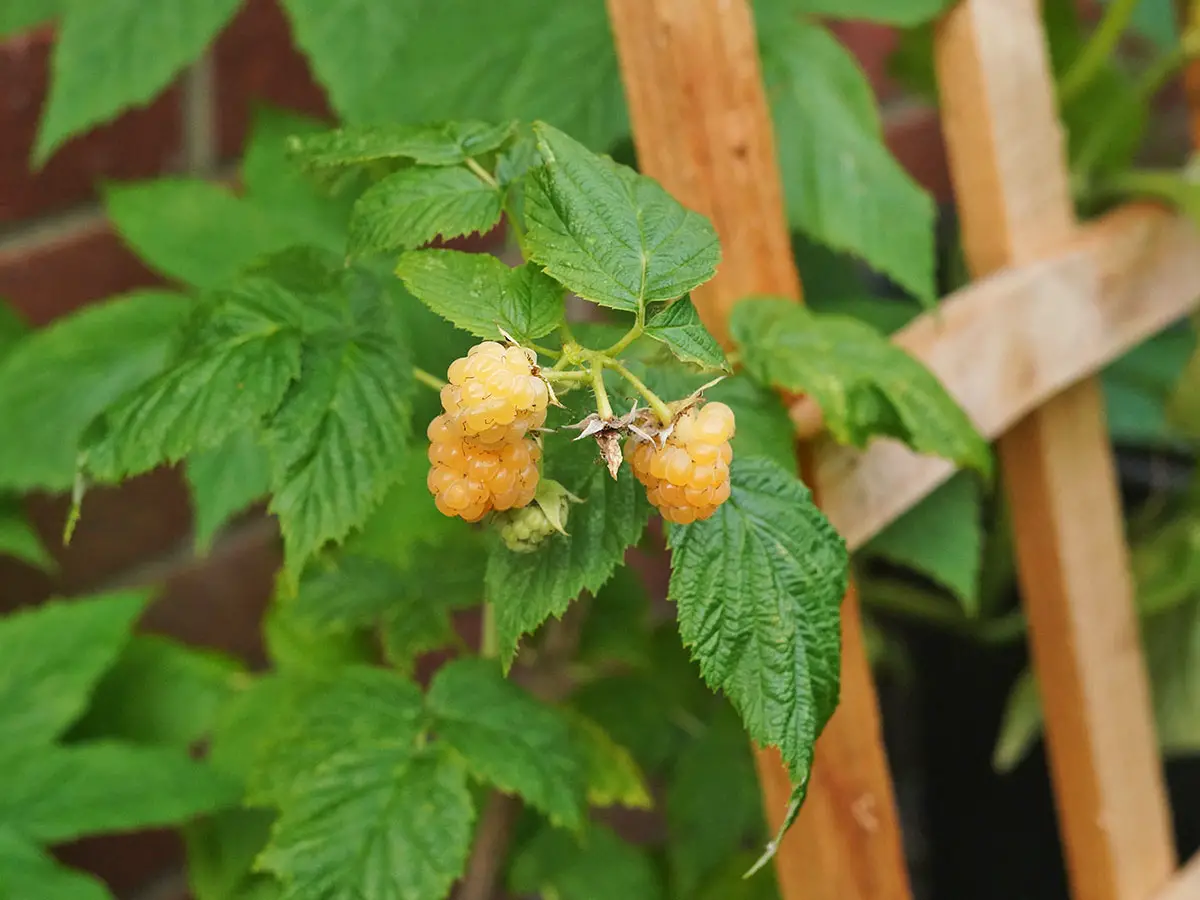10 Unusual Fruits to Grow in a Small Garden
February, 2023 |Looking to grow something out of the ordinary? These unusual fruits can add color, interest, and variety to a small productive garden!
Some of these fruits are popular in other countries, others are lesser-known native fruits of the US and some are simply unusual varieties! But all of them have a weird or wonderful feature that makes them interesting and unusual fruit to grow in a small garden.
You might not be able to find these uncommon fruits in traditional nurseries. But all of them can definitely be found online from growers like One Green World or Mehrabyan Nursery.
Here are 10 unusual fruits to grow in a small garden or balcony space…
1. Buddha’s Hand Lemon
We’re starting the list with a very unusual citrus fruit. Buddha’s Hand lemons have a very distinct shape that is unmistakable. Because of the long fingers, Buddha’s Hand lemons are usually used for their peel and zest. They’re perfect for grating onto a salad or using in baking recipes!
As a citrus fruit, they’ll grow best in warmer areas that receive lots of sunlight. If you live in a cooler climate but still want to grow something with a delicious tropical taste, check out the pawpaw further down the list!
Taste: Sweet and lemony!
USDA zone: 9-11
Native range: Southeast Asia

2. Mulberries
These tasty, underappreciated fruits look like an elongated blackberry. And slightly resemble them in taste too!
There are over 60 wild mulberry species, some native to the US, but three have become more well-known as cultivar species — and are grouped as black, red, and white mulberries! They form fairly compact trees, but if space is really tight, you can find a few dwarf mulberry varieties.
Taste: Sweet, tart. The depth of flavor depends on the variety.
USDA zone: 4-10
Native range: Most temperature regions.

3. Gold Raspberry
Fancy growing a crop of golden raspberries? These bright, unusual fruits look jewel-like when growing on the vine. They’re ideal for adding an unusual twist to desserts or fruit salads too!
Gold raspberry vines are also the perfect crop for a vertical garden. You can easily train the vines to climb a trellis or vertical support.
Taste: Sweet, but less tart than red raspberries, with a slight honey/floral taste.
USDA zone: 4-8
Native range: Native to large parts of Asia, including Nepal and the Philippines.

4. Red Flesh Apple
Another tasty fruit with a unique color variation. The flesh of these apple varieties contains higher levels of anthocyanin (color compounds) which turns them red or pink! You could use them to make a pretty pink applesauce or add chopped slices to a colorful salad.
Apples can usually be bought on dwarf rootstock, meaning you can easily fit an apple tree onto a balcony.
Taste: Thought to be slightly sweeter and tarter than other apples.
USDA zone: 4-8
Native range: Many of these hybrid varieties were originally grown by a passionate apple breeder from Switzerland.

5. Saskatoon Serviceberry (Amelanchier)
A beautiful display of white flowers in spring, followed by a flush of juicy berries in summer — what’s not to love?! Native to Alaska and Canada, Saskatoon is particularly cold hardy making it an excellent fruit to grow in cooler regions.
It’s a really nutritious berry to grow in your garden, with an antioxidant content that rivals blueberries! Recipe-wise, you can eat the berries straight off the bush or substitute them for blueberries in endless recipes.
Taste: Similar to blueberries but with a sweet nutty, almond-like flavor.
USDA zone: 4-7
Native range: Western Canada and the northwestern US states including Alaska.

6. Donut Peach
Otherwise known as the Saturn peach, this peach variety has an unusual flattened shape. Through spring you’ll be treated to a display of pretty pink blossom. Then in summer, you’ll be able to pick your own donut-shaped peaches!
If space is really tight in your backyard or balcony, you can grow dwarf Saturn peach trees. They’re a really lovely fruit tree to grow in a container.
Taste: Juicy and sweet, with a small hint of almond.
USDA zone: 5-9
Native range: The Saturn peach is originally native to China.

7. Pink Lemonade Blueberry
These bright pink berries taste exactly like their namesake! They’re a variety of Highbush blueberry (Vaccinium corymbosum), so they still have that familiar blueberry shape. However, as the light pink flowers fade away, the green fruits will eventually ripen and turn bright pink.
Pink Lemonade blueberries tend to form very compact bushes with a maximum height of 5 ft. This makes them manageable for mini garden spaces, like a balcony or porch. They also don’t need a companion pollination variety, so the bush will fruit when kept on its own.
Taste: Sweeter than a regular blueberry, they have an almost citrusy-flowery taste.
USDA zone: 4-9
Native range: This variety was bred by the USDA in the 70s from two different parent blueberry bushes.

8. Pineapple Guava
Originally native to South America, the Pineapple Guava, or Feijoa, is a small shrub with incredibly tasty, small green fruits. The fruit flesh is juicier than most other guava varieties.
It has glossy evergreen foliage year-round which makes it ideal for adding a little privacy on a balcony. As well as tasty fruit, pineapple guava also has beautiful, showy flowers with light pink petals and bright red stamens.
Taste: Sweet and tropical with a hint of pineapple.
USDA zone: 7-10
Native range: South America.

9. Pawpaw
Often known as America’s forgotten fruit, pawpaws have long been a valued fruit for indigenous Americans in Eastern states. They tend to bruise easily so don’t travel well. This is possibly why they’ve been pushed under the radar and won’t appear in supermarkets. So if you want to enjoy their sweet, summery taste, growing your own pawpaw tree is the perfect solution.
Pawpaws are best when grown in the ground but they can also be grown in a container too. For a fruit that’s native to northern climates, it actually has an amazing tropical flavor!
Taste: Tropical, like a mix between a banana and mango!
USDA zone: 4-9
Native range: Eastern states of North America

10. Honeyberry
Honeyberry (Lonicera caerulea) is a member of the honeysuckle family. It produces deliciously sweet, berries that resemble an elongated blueberry. It’s definitely an interesting plant to introduce into your small garden space. You could impress guests by using berries to create desserts, jams, or even wine!
There are lots of different varieties to choose from, including late and early fruiters. The early varieties will provide a great supply of early summer fruit in your small garden. Honeyberry bushes are also exceptionally hardy, and can usually survive temperatures of -40F!
Taste: Tart and sweet, a mix between a blueberry, alpine strawberry, and blackcurrant!
USDA zone: 3-8
Native range: Wetlands in northern forests of North America, Europe, and Asia.

Fruits and most veg need at least 6-8 hours of sunshine daily to produce fruit. So all of these unusual fruits will benefit from being placed in the sunniest part of your small garden.
Interested in growing more unusual crops in your garden? Check out these unusual squash varieties to grow. Unusual veg and fruit can be a great way to impress family and friends coming over for dinner, and they simply look beautiful growing along a vertical trellis or bursting out of containers!






